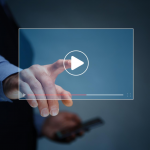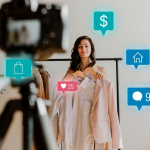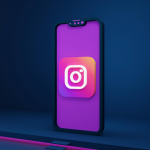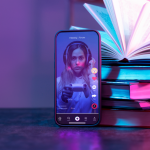In today’s digital world, it’s hard to ignore the influence of video sharing platforms. From YouTube to TikTok, these platforms have reshaped the way we consume content. They’ve not only altered our entertainment habits but have also revolutionized marketing strategies, education, and even politics.
Video sharing platforms have democratized content creation, enabling anyone with a smartphone to become a global broadcaster. They’ve empowered a generation of influencers and creators, fundamentally changing the dynamics of fame and celebrity. But what’s the real impact of these platforms?
Evolution of Video Sharing Platforms
Video sharing platforms have truly come a long way. Just over a decade ago, the concept was relatively unknown. There were only a few players in the market and their offerings were fairly basic. Now, they’re an integral part of our lives, particularly the heavyweights offer – YouTube and TikTok.
Back in the early days, these platforms were used primarily for casual content sharing. Family videos, humor, and other lightweight content dominated the landscape. But today, they’re so much more. They’re a hub for educational content, business marketing, political campaigns, and DIY tutorials to name a few. More importantly, these platforms have leveled the playing field in terms of content creation. They have opened doors to a world where anyone with a smartphone and a creative idea can reach out to millions across the globe.
Today, YouTube boasts over 2 billion logged-in users monthly. And TikTok isn’t too far behind, with 689 million active users globally. The mind-boggling numbers are a testament to their popularity and influence.
| Platform | Monthly Active Users |
|---|---|
| YouTube | 2 Billion |
| TikTok | 689 Million |
The evolution doesn’t stop there. The features and accessibility that these platforms provide are constantly evolving. Video quality, interactive features, and even monetization options for creators have improved beyond imagination. Algorithms too, have been refined to connect viewers with content that aligns with their interests.
However, it’s important to remember that as these platforms continue to evolve, so do the challenges associated with their use. Issues like copyright infringement, inappropriate content, and the spread of misleading information are still major concerns, warranting serious attention from platform operators.
Despite these challenges, video sharing platforms haven’t reached their zenith yet. They’ll continue to evolve and change, portraying the world in vivid pixels and vibrant sounds. Internally, they will shoulder the responsibility to maintain the balance between creativity, opportunity, and accountability.
Influence on Entertainment Habits
Video sharing platforms have dramatically altered the way we consume entertainment. Traditional modes of broadcasting are now being overshadowed by digital platforms. It’s no longer about television schedules or waiting for a new movie release at the local cinema. We’ve transitioned into an era of streaming and on-demand video content.

Platforms like YouTube and TikTok have brought a significant shift to the entertainment spectrum. User-generated content has become a solid contender against professionally-produced shows and movies. Let’s delve a bit deeper into how our entertainment habits have been influenced.
Democratizing Content
Driving this evolution, it’s the democratization of content creation. No longer are we solely reliant on film studios or TV networks for our entertainment. With a smartphone and internet connection, anyone can become a creator. From vlogs and tutorials to short skits, the range of content produced is vast yet personalized. It both reflects and responds to viewer interests and trends.
What’s more, it caters to niche markets that mainstream media often overlooks. Whether you’re into gardening or gourmet cooking, video game reviews or vintage car restoration, there’s a channel out there just for that.
Shift in Viewing Habits
The rise of these platforms also reflects a shift in our viewing habits. Traditional TV watch time has fallen while digital video consumption has soared. According to Statista, in 2020, adults in the US spent an estimated 1 hour and 11 minutes daily watching digital video, up from just 21 minutes in 2015.
| Year | Daily Digital Video Watch Time (US adults) |
|---|---|
| 2015 | 21 minutes |
| 2020 | 1 hour and 11 minutes |
The on-demand, interactive nature of these platforms ensures content is available whenever and wherever, aligning with our increasingly busy lifestyles.
As the influence of video-sharing platforms grows, so too will their impact on our entertainment habits. They’ve set a new benchmark in the entertainment industry, one that focuses on accessibility, variety, and user-driven content creation. And, though not by design, the article isn’t done yet. The journey of video-sharing platforms is far more wide and varied.
Revolutionizing Marketing Strategies
As video sharing platforms gain in popularity, a significant impact is seen in traditional marketing strategies. Nowadays, brands aren’t looking at simply filling up commercial spots during prime time. Instead, they are tapping into the power of these platforms and weaving their presence into the viewer’s everyday routines.
One marketing strategy that’s risen from this change is influencer marketing. No longer are celebrities the only ones influencing purchase decisions. Anyone can become an influencer in their niche, provided they have a solid following and engage regularly with their audience. These are real, relatable individuals who have the power to sway the tastes and preferences of their followers. From cooking enthusiasts, tech gurus, fitness gurus, to beauty bloggers, these influencers can promote a product or service in a way that’s both genuine and powerful, bringing unprecedented authenticity to marketing efforts.
Now let’s take a quick look at the numbers. In a survey conducted in 2020, about 80% of brands found influencer marketing effective. In fact, around 67% increased their budget for influencer marketing.
| Survey Year | Brands finding Influencer Marketing Effective | Brands Increasing Budget for Influencer Marketing |
|---|---|---|
| 2020 | 80% | 67% |
Personalized ads are a result of another trend making waves, and it’s all thanks to the data these platforms collect. They browser behavior, viewing habits, interests, and more of the viewers – allowing companies to serve highly targeted and relevant ads. Gone are the days of one-size-fits-all ads. In today’s digital age, the more relevant and personalized your ads are, the better.
Clearly, the advent of video sharing platforms is not only transforming the way we consume entertainment. It’s also reshaping the way marketers approach and engage with consumers. The power now lies in authenticity, personal connections, and data-driven decisions. And it seems, these changes are only the beginning.
Impact on Education and Politics
As we unpack the influence of video sharing platforms, it’s impossible to ignore the ripple effect seen in education and politics. Let’s delve into how these realms have been impacted.
With the rise of digital learning, video sharing platforms have become critical in supplementing classroom education. Schools and teachers are leveraging platforms like YouTube to create engaging content. Videos are now used extensively, making complex topics easier to understand. They’ve given students the ability to learn at their own pace without the pressure of keeping up. Plus, there’s a wealth of information available – everything from hardcore science lessons to historical documentaries. The power of video sharing lies in the accessibility and variety it offers students.
But that’s not all. Video sharing platforms have also made waves politically. The proliferation of these platforms has allowed politicians and political parties to reach wider audiences and project their messages rapidly. Campaigns are now easily broadcast to millions without the need for traditional channels. It’s become a space where politicians can control their narrative, directly addressing their constituents without a third-party filter. This direct approach has been a game changer in the way an electorate perceives a political entity. However, it’s also brought to light the need for procedures to counter misinformation, a challenge all governments are facing today.
Both education and politics continue to be disrupted and transformed by the rise of video sharing platforms.
Please, continue reading the rest of the article for more detailed insights on other impacts of these platforms.
Democratization of Content Creation
What was once a playground for major media outlets has now evolved into a fertile ground for anyone with a camera and internet connection. The biggest game-changer here, y’know what it is? Video sharing platforms.
These platforms have facilitated the democratization of content creation, turning folks from mere consumers into active producers. No longer are we dependent on big networks for entertainment. Instead, we now have individual creators, providing us with a rich diversity of content.
The beauty lies not just in the creation but also in the platform’s ability to amplify voices that were previously unheard. Everyone has a chance to reach a global audience, doesn’t matter if you’re a makeup enthusiast from a small town or a tech guru from a bustling city. That’s the power of democratisation, isn’t it?
The rise of the “influencer economy“ supports this reality. Content creators, by leveraging their popularity and impact, are now a major force in marketing campaigns. No need for big advertising budgets or expensive production setups. Partner with an influencer, and you’ve got yourself a personalized, authentic, and engaging promotion tool.
So, not only has democratization of content creation transformed the way we consume media, it’s also reshaped the advertising industry. And yet, that’s not all. It’s positively impacted education and politics too, as we deeper into earlier.
With the growing influence and evolution of video sharing platforms, it’s become clear that we’re no longer just passive recipients of media but active participants shaping its future. The implications of this shift reach far and wide – influencing not only how we interact with content but also how we perceive the world at large.
It’s a brave new world out there, and video sharing platforms have undoubtedly played a significant part in shaping it. They’re more than just a source of entertainment – they’ve become tools of empowerment, communication, and education.
For content creators across the world, the possibilities are endless. From launching careers to sparking social movements, video sharing platforms have made a staggering impact on our global culture.
Empowering Influencers and Creators
With the rise of video sharing platforms, we have witnessed a significant shift in power dynamics within the content creation and consumption landscape. These platforms have propelled ordinary individuals into the spotlight, shaping them into influencers, content creators, and even brand ambassadors.
Over the past decade, influencers have emerged as powerful digital celebrities with loyal fan bases. These influencers share insights, tutorials, product reviews, personal experiences, and passion projects on video sharing platforms. This interaction weaves a thread of trust and authenticity, fostering a strong bond between creator and audience. It’s this bond that brands seek out when collaborating with influencers for advertising campaigns.
These platforms not only shape the influencers’ careers, but they also change ordinary users’ lives. Anyone with a smartphone, a voice, and a vision can become a creator. Whether it’s cooking, tech, DIY, or travel, video sharing platforms cater to an array of niche interests. This democratisation of content creation fosters creativity and encourages individual expression, giving voice to perspectives that might have otherwise gone unnoticed.
As a result, video sharing platforms have drastically changed the perception of celebrity and authority. The line between celebrity and ordinary people is increasingly blurring, demonstrating that influence is no longer solely tied to traditional fame and fortune, but can stem from meaningful virtual interactions.
Despite the challenges, these shifts have allowed content creators to build careers and businesses around their passions. In a world where the viewer has the power to shape the influencer landscape, the opportunity exists for everyone to become creators. This new media landscape built on video sharing platforms continues to evolve, giving rise to new norms, careers, and influence.
Changing Dynamics of Fame and Celebrity
In the age of video sharing platforms, the rules of fame and celebrity are being revised. Traditional perception of fame, often associated with actors, athletes, or music stars seen only on big screens or heard over the radio, is rapidly changing. Access to video sharing platforms has leveled the playing field and fostered a new kind of celebrity culture.
Gone are the days of celebrities being distant, untouchable entities. Today, it’s all about being real, relatable, and reachable. Authenticity is the new fame, and there’s nothing more authentic than influencers sharing their day-to-day routine, their favorite products, or thoughts about various topics. This real-time engagement builds a sense of trust that has been pivotal in shifting the dynamics of fame.
These video sharing platforms have also brought diversity to fame. It’s no longer about fitting into Hollywood’s or any industry’s established criteria. Today’s celebrities include gamers, fitness coaches, makeup artists, and food bloggers. From Minecraft tutorials to DIY crafts, these new-age “celebs” are individuals who’ve mastered the algorithm to reach their audience, transforming niche interests into global trends.
Additionally, the influence game has moved from red carpets to comment sections. Engagement on posts and videos is a key player in determining an influencer’s reach, shaping platform algorithms to favor those who interact more with their followers. This shift emphasizes the two-way interaction nature of modern fame – fans can communicate directly with their favorite stars, influencing their content in return.
It’s clear that these platforms have opened a whole new world of possibilities. While the traditional notion of fame isn’t completely extinct, it’s definitely evolving. These platforms provided a launchpad for anyone with a smartphone and a vision to become a viral sensation, fostering a more inclusive and democratic celebrity culture.
Conclusion
Video sharing platforms are indeed revolutionizing the way we perceive fame and celebrity. They’ve democratized the spotlight, allowing diverse content creators to shine. It’s no longer about being unreachably glamorous; it’s about being authentically relatable. From gamers to fitness gurus, anyone with a unique voice can now find a global audience. These platforms are fostering a new breed of celebrities who engage with their followers, building trust through real-time interactions. It’s clear that the concept of fame is evolving, shifting from one-sided admiration to meaningful two-way conversations. The future of fame is here and it’s more accessible, diverse, and interactive than ever before.
 Boosting Engagement with Clickable Videos: Your Secret Weapon for Content Success
Boosting Engagement with Clickable Videos: Your Secret Weapon for Content Success  Shoppable Videos: 7 Interesting tips to Make the Most Out of This Trend?
Shoppable Videos: 7 Interesting tips to Make the Most Out of This Trend?  How Content Marketing Boosts Sales
How Content Marketing Boosts Sales  8 Good Interactive Instagram Story Ideas for Business
8 Good Interactive Instagram Story Ideas for Business  Maximizing ROI: Are Short-Form Videos the Future of Content Marketing?
Maximizing ROI: Are Short-Form Videos the Future of Content Marketing?